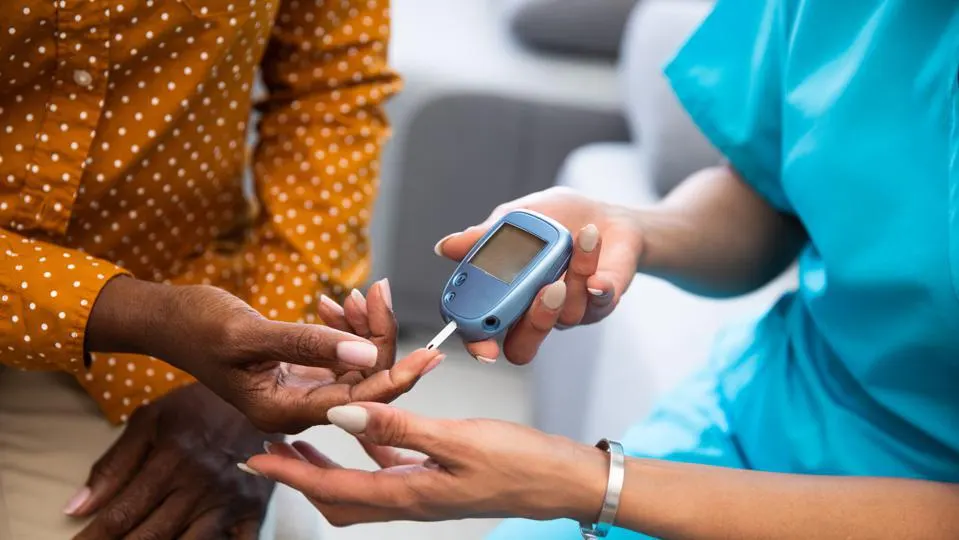Diabetes, a chronic condition characterized by high blood sugar levels, has quietly become a global health crisis. Affecting millions worldwide, it silently wreaks havoc on lives, often with subtlety that belies its serious consequences.
Understanding diabetes, its impact, and the journey of those living with it is crucial in combatting this pervasive disease.
Diabetes is often called a silent epidemic because its symptoms can be easy to miss. There are three main types: Type 1, Type 2, and gestational diabetes. Type 1 diabetes is an autoimmune condition where the body attacks insulin-producing cells in the pancreas. Type 2 diabetes, the most common form, occurs when the body becomes resistant to insulin or doesn’t produce enough insulin. Gestational diabetes occurs during pregnancy and usually disappears after childbirth but can increase the risk of developing Type 2 diabetes later in life.
According to the World Health Organization, the prevalence of diabetes has been rising more rapidly in low- and middle-income countries, largely due to lifestyle changes associated with urbanization and westernization. In 2021, approximately 537 million adults worldwide were living with diabetes, and this number is expected to increase to 643 million by 2030.
The IDF regards Uganda as one of the 48 countries with a growing diabetes-related health issue. With a prevalence of 4.1 percent for all types of T2DM (diagnosed and undiagnosed) in Uganda in 2019, 1.69 million Ugandans have T2DM. It is costly to manage and treat T2DM.
The brief highlights that in 2022, diagnosed T2DM management and treatment cost the government and households a total of UGX2.2 trillion, the burden falling more on households. Oral drugs and OPD consultations were the key cost drivers for treating T2DM without complications. At the same time, diabetic eye treatment of laser and cataract type, haemodialysis, and strokes drove the high costs of T2DM-related complications. Given this, emphasis must be placed on spreading knowledge about T2DM and, more significantly, developing prevention programs.
The impact of diabetes on individuals is profound. Beyond the physical complications such as heart disease, stroke, kidney failure, blindness, and limb amputations, the emotional and psychological toll can be immense.
Living with diabetes requires constant vigilance and management. Patients must monitor their blood sugar levels regularly, adhere to a strict diet, and often rely on medication or insulin injections. This relentless management can lead to stress, anxiety, and depression.
Emma’s story is a testament to the daily struggles faced by many diabetics. Diagnosed with Type 1 diabetes at age 10, Emma, now 28, describes her life as a balancing act.
“It’s a constant calculation,” she says. “Every meal, every activity, even stress levels, everything affects my blood sugar. It’s exhausting, but you learn to manage it because you have to.”she said
Despite its challenges, advancements in diabetes treatment and management offer hope. Continuous glucose monitors (CGMs) and insulin pumps have revolutionized how people manage their condition. CGMs provide real-time blood sugar readings, reducing the need for frequent finger pricks. Insulin pumps deliver precise amounts of insulin, tailored to the user’s needs.
Moreover, research into diabetes is ongoing, with scientists exploring potential cures and improved treatments. Advances in stem cell research, for example, hold promise for regenerating insulin-producing cells in Type 1 diabetics. Meanwhile, new medications and lifestyle interventions continue to enhance the quality of life for those with Type 2 diabetes.
The Role of Lifestyle
Prevention and management of diabetes heavily rely on lifestyle choices. A balanced diet rich in whole grains, fruits, vegetables, and lean proteins, combined with regular physical activity, can significantly reduce the risk of Type 2 diabetes.
For those already diagnosed, these lifestyle changes are crucial in managing the disease and preventing complications.
John Matovu, a 52-year-old Type 2 diabetic, attributes his success in managing his condition to lifestyle changes
“I used to be overweight and inactive. My diagnosis was a wake-up call. I started eating healthier, exercising regularly, and lost 30 pounds. My blood sugar levels are now under control, and I feel better than I have in years.”he said
Education and awareness are vital in the fight against diabetes. Many people remain unaware of the risk factors and early signs of the disease, leading to late diagnoses and complications. Public health campaigns and community programs play a crucial role in spreading knowledge about diabetes prevention and management.
Healthcare professionals also emphasize the importance of regular check-ups and screenings, especially for those with a family history of diabetes or other risk factors like obesity and sedentary lifestyles. Early detection can prevent or delay complications, improving outcomes for patients.
Diabetes is a complex and multifaceted disease that requires a comprehensive approach to management and prevention.
While the journey can be arduous, advancements in treatment, increased awareness, and lifestyle modifications provide a pathway to living well with diabetes. By understanding the disease and supporting those affected, society can better address this silent epidemic and improve the lives of millions worldwide.




